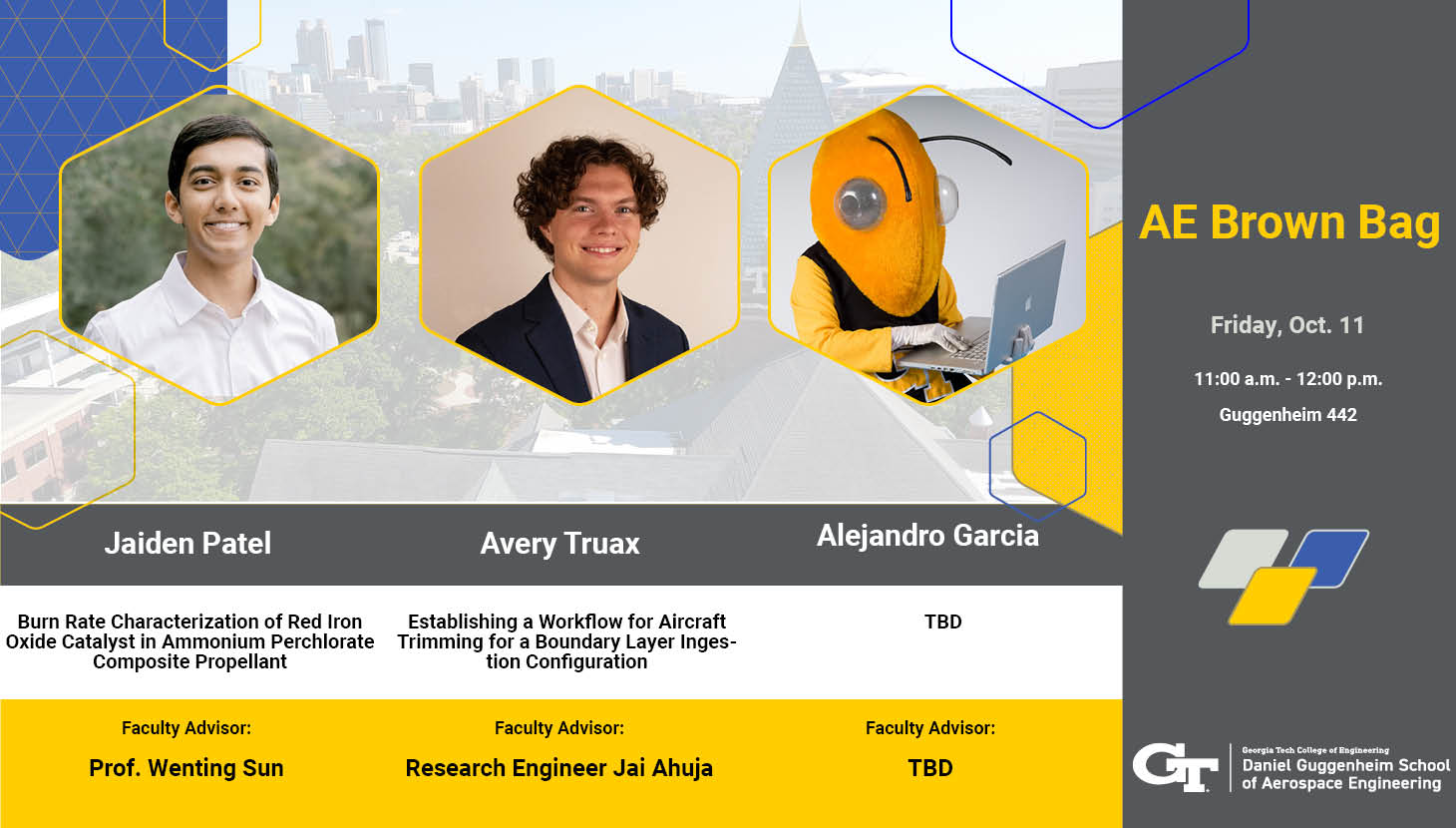
AE Brown Bag Seminar
Friday, October 11
11:00 a.m. -12:00 p.m.
Guggenheim 442
Pizza Served
Alejandro Garcia
Jaiden Patel
Avery Truax
Jaiden Patel
Title:
Burn Rate Characterization of Red Iron Oxide Catalyst in Ammonium Perchlorate Composite Propellant
Abstract:
In solid rocket motor design, the burn rate of the propellant is a vital characteristic that influences the shape and magnitude of the resultant thrust curve. Motor internal ballistics is of interest to the Ramblin' Rocket Club's (RRC) experimental rocketry team, Georgia Tech Experimental Rocketry (GTXR). GTXR seeks to be the first collegiate team to send a two-stage sounding rocket to the Kármán line, a widely-recognized boundary of outer space. In service of this goal, the team seeks to develop a faster-burning propellant for use in higher-impulse motors. In this presentation, I discuss the burn rate sensitivity to chamber pressure for a new ammonium perchlorate composite propellant (APCP) with a red iron oxide catalyst. The new propellant was developed by modifying GTXR's heritage formulation and mixing procedure to incorporate the catalyst before oxidizer addition. A reusable motor apparatus was designed and manufactured with nozzle inserts of different throat diameters to test a range of chamber pressures over multiple hot-fire tests. Steady-state pressure regions are identified from pressure transducer data and the burn rate was characterized according to St. Robert's Law. The derived performance of this propellant suggests a roughly 25 percent faster burn rate from the previous formulation across the tested pressure region.
Faculty Advisor:
Professor Wenting Sun
Avery Truax
Title:
Establishing a Workflow for Aircraft Trimming for a Boundary Layer Ingestion Configuration
Abstract:
Boundary layer ingestion (BLI) is an emerging technology with the potential to significantly enhance fuel efficiency in commercial aviation by improving the aerodynamics of current aircraft configurations. This increase in efficiency is achieved by re-energizing the boundary layer and reducing wake formation. However, integrating propulsion systems into highly viscous regions of the airflow introduces aerodynamic complexities that must be carefully analyzed. To address this, it is crucial to accurately model the propulsive effects on the aircraft’s overall aerodynamic performance. This research outlines a workflow that iteratively solves for the aircraft’s trim state by coupling computational fluid dynamics (CFD) simulations with an engine deck generated using NASA’s NPSS (Numerical Propulsion System Simulation). The workflow is designed to support more complex three-dimensional simulations as the research progresses. Additionally, this work explores ongoing efforts to optimize both the workflow and the overall aircraft configuration for maximum efficiency.
Faculty Advisor:
Research Engineer Jai Ahuja